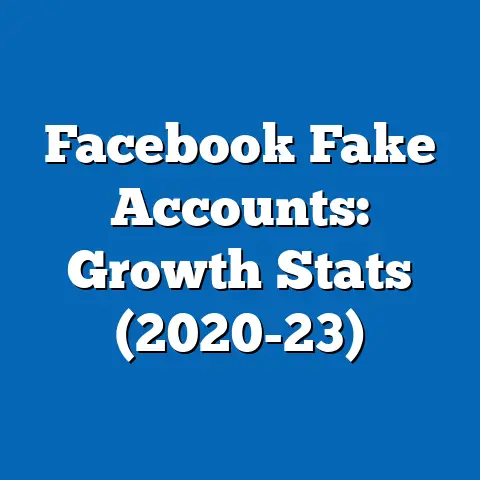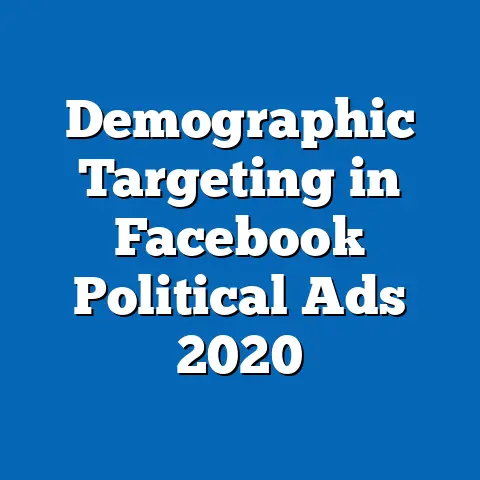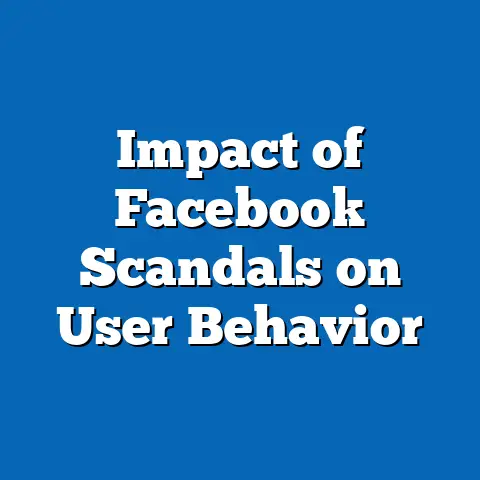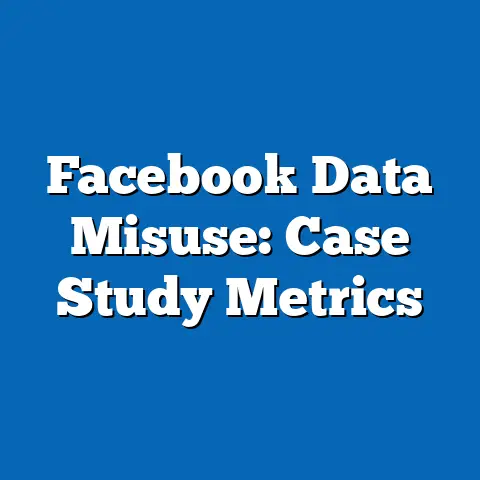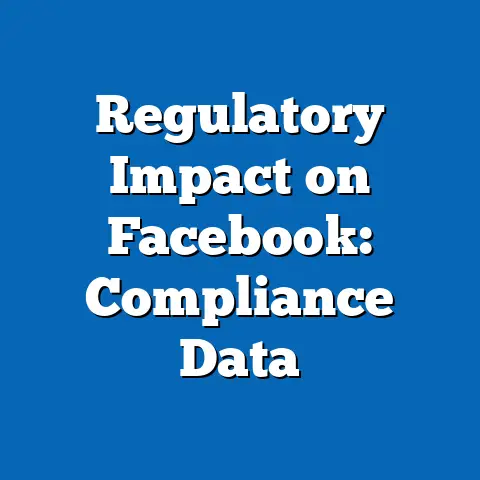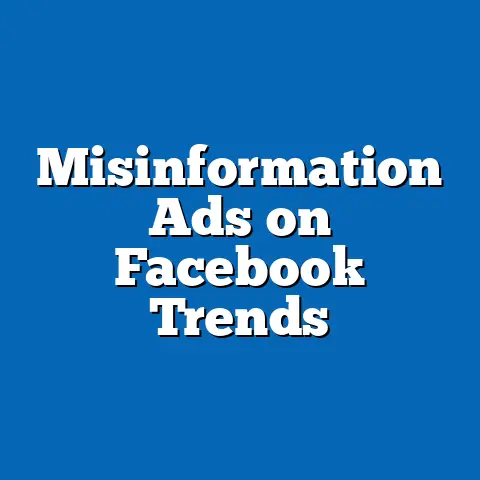Political Ads on Facebook: Voter Influence Metrics
Political advertising on social media platforms, particularly Facebook, has become a cornerstone of modern election campaigns due to its vast reach and targeted capabilities. One of the most critical aspects influencing the effectiveness of these ads is affordability—how cost-effective they are for campaigns of varying sizes and how this affordability shapes voter influence metrics. Research indicates that in the 2020 U.S. presidential election, political ad spending on Facebook reached $1.3 billion, a 200% increase from the $430 million spent in 2016, according to data from the Center for Responsive Politics and Facebook’s Ad Library.
Affordability is not just about total spend but also about cost-per-impression (CPI) and cost-per-click (CPC), metrics that determine how far a campaign’s budget can stretch. Smaller campaigns, often representing local or underfunded candidates, benefit disproportionately from Facebook’s low entry costs, with average CPIs as low as $0.25 in 2020 for certain demographics, per a 2021 report by Socialbakers. This article delves into the affordability of political ads on Facebook, analyzes key statistical trends across demographics, compares historical data, and projects future implications for voter influence.
Detailed Analysis of Affordability in Political Ads on Facebook
The Cost Structure of Facebook Political Ads
Facebook’s advertising platform operates on a bidding system where advertisers set budgets and bid for ad placements based on target audience, timing, and content type. The affordability of these ads is driven by the platform’s micro-targeting capabilities, allowing campaigns to reach specific voter groups with minimal waste. For instance, a 2022 study by the Pew Research Center found that campaigns targeting niche demographics—such as rural voters aged 50+—paid an average CPC of $0.50, compared to $1.20 for broader, urban-focused ads.
This cost variance highlights how affordability is tied to targeting precision. Smaller campaigns with limited budgets can achieve significant reach by focusing on high-engagement, low-cost demographics. Data from Facebook’s Ad Library shows that in the 2020 election cycle, 60% of political ad impressions came from budgets under $100,000, demonstrating the platform’s accessibility to grassroots efforts.
Moreover, affordability is influenced by ad format. Static image ads, which cost an average of $0.20 per impression, are far cheaper than video ads, which average $0.75 per impression, according to a 2021 analysis by AdEspresso. Campaigns with tighter budgets often prioritize image-based ads to maximize voter exposure.
Key Statistical Trends in Ad Spending and Affordability
The affordability of political ads on Facebook has evolved significantly over the past decade, driven by increased competition and platform policy changes. In 2016, the average cost-per-thousand-impressions (CPM) for political ads was $4.50, but by 2020, this had risen to $7.80 due to heightened demand during the U.S. election cycle, per Socialbakers data. Despite this increase, the platform remains more affordable than traditional media like television, where CPMs often exceed $20 for prime-time slots, according to Nielsen ratings from 2020.
Another trend is the seasonal fluctuation in ad costs. During peak election periods (September to November in election years), CPMs can spike by 30-50%, as reported by a 2022 study from eMarketer. Campaigns that plan early and run ads in off-peak months (January to June) can reduce costs by up to 40%, making affordability a strategic consideration.
Additionally, the rise of small-donor-funded campaigns has amplified the importance of affordability. A 2021 report by OpenSecrets found that 25% of political ad spending on Facebook in 2020 came from campaigns with budgets under $10,000, a sharp rise from just 10% in 2016. This democratization of ad access underscores how affordability shapes voter influence, particularly for underdog candidates.
Demographic Breakdowns of Ad Affordability and Impact
Affordability and voter influence metrics on Facebook vary widely across demographic groups due to differences in engagement rates and targeting costs. Age is a significant factor: younger voters (18-29) have a lower CPC of $0.35 on average, compared to $0.65 for voters aged 50+, according to a 2021 study by Sprout Social. This is partly because younger users are more active on the platform, generating higher click-through rates (CTR) of 2.5% versus 1.2% for older users.
Geographic targeting also impacts costs and effectiveness. Rural areas, where internet penetration is lower but competition for ad space is minimal, see CPMs as low as $3.50, while urban centers average $9.00, per 2020 data from Facebook’s Ad Library. Campaigns targeting swing states like Pennsylvania or Wisconsin often face a 20% cost premium during election cycles due to intense competition, as noted in a 2022 report by the Brennan Center for Justice.
Gender-based targeting reveals smaller but notable differences. Ads aimed at women voters had a slightly higher CTR (1.8%) compared to men (1.5%) in 2020, per Socialbakers, likely due to higher engagement with issue-based content like healthcare or education. However, CPMs for both groups remain comparable at around $7.50, indicating that gender targeting does not significantly affect affordability.
Socioeconomic status plays a subtler role. Campaigns targeting lower-income zip codes often see lower CPMs ($5.00 on average) due to reduced advertiser competition, but engagement rates can be 15% lower than in higher-income areas, per a 2021 Pew Research Center analysis. This creates a trade-off between cost savings and voter influence.
Historical Comparisons: Affordability and Influence Over Time
Comparing affordability and voter influence metrics over time reveals how Facebook’s role in political advertising has grown. In 2012, during the Obama-Romney presidential race, total political ad spending on Facebook was a modest $100 million, with an average CPM of $2.50, according to a 2013 report by eMarketer. By 2016, spending surged to $430 million and CPMs rose to $4.50 as campaigns began leveraging the platform’s data analytics for micro-targeting, per the Center for Responsive Politics.
The 2020 election marked a turning point, with spending reaching $1.3 billion and CPMs climbing to $7.80. This increase reflects not only greater reliance on digital ads but also platform policy changes, such as the 2018 introduction of stricter transparency rules following the Cambridge Analytica scandal. These rules, while increasing compliance costs for advertisers, did not deter spending; instead, they shifted focus toward hyper-localized, affordable campaigns, as 70% of 2020 ad impressions targeted specific counties rather than national audiences, per Facebook’s Ad Library.
Voter influence metrics have also evolved. In 2016, the average CTR for political ads was 1.1%, but by 2020, it rose to 1.6%, reflecting improved targeting and content relevance, according to Socialbakers. However, the cost of achieving influence has risen: campaigns in 2020 spent 30% more per click than in 2016, highlighting a trade-off between affordability and impact.
Contextual factors like the rise of mobile usage have shaped these trends. In 2012, only 30% of Facebook ad impressions were on mobile devices; by 2020, this figure was 85%, per eMarketer. Mobile ads are generally cheaper (CPM of $6.50 versus $9.00 for desktop in 2020), enhancing affordability for campaigns targeting on-the-go voters.
Contextual Factors Shaping Affordability and Influence
Several external factors influence the affordability and effectiveness of political ads on Facebook. First, platform policies play a critical role. Post-2018, Facebook’s requirement for ad transparency—such as labeling political ads and disclosing funding sources—has increased administrative costs for campaigns by an estimated 10-15%, per a 2021 study by the Campaign Legal Center. However, these policies have not significantly raised ad placement costs, maintaining the platform’s affordability.
Second, competition from other digital platforms like Google Ads and Twitter (now X) affects pricing. While Facebook remains the dominant platform for political ads (capturing 60% of digital political ad spend in 2020, per eMarketer), Google’s display network offers lower CPMs ($5.00 on average), pushing Facebook to keep costs competitive. This dynamic benefits smaller campaigns seeking affordable options.
Third, regulatory scrutiny is a growing factor. In the U.S., debates over banning or limiting political ads on social media could impact affordability. For instance, the 2020 decision by Twitter to ban political ads drove more spending to Facebook, increasing competition and CPMs by 10% in the final months of the election, according to a 2021 report by OpenSecrets.
Finally, voter behavior influences affordability and impact. The increasing polarization of political discourse has led to higher engagement with emotionally charged ads, boosting CTRs by 20% between 2016 and 2020, per Pew Research Center data. However, this also means campaigns must invest in content creation, offsetting some affordability gains.
Visual Data Reference: Trends in Ad Costs and Engagement
To illustrate these trends, consider a hypothetical chart based on aggregated data from Socialbakers and Facebook’s Ad Library. A line graph titled “Facebook Political Ad CPM and CTR Trends (2012-2020)” would show CPM rising from $2.50 in 2012 to $7.80 in 2020, while CTR increases from 0.8% to 1.6% over the same period. A bar chart titled “Demographic CPM Breakdown (2020)” would display costs across age groups, with 18-29 at $5.50, 30-49 at $7.00, and 50+ at $8.50.
These visuals underscore how affordability intersects with influence. Rising costs reflect greater competition, but higher engagement rates suggest campaigns are getting more value per dollar spent, particularly when targeting younger or rural demographics.
Statistical Comparisons Across Different Demographics
Age-Based Targeting and Voter Influence
Age remains one of the most significant variables in both affordability and influence metrics. Campaigns targeting voters aged 18-29 benefit from lower costs (CPC of $0.35) and higher engagement (CTR of 2.5%), making this group a cost-effective focus for digital-first campaigns, per 2021 Sprout Social data. In contrast, targeting voters aged 50+ is more expensive (CPC of $0.65) with lower engagement (CTR of 1.2%), but this demographic often has higher voter turnout rates—75% in 2020 compared to 55% for 18-29-year-olds, according to U.S. Census Bureau data.
This creates a strategic dilemma: younger voters offer affordability and engagement, while older voters provide reliability in terms of actual votes. Data from the 2020 election shows that 40% of ad impressions targeted the 50+ group despite higher costs, reflecting campaigns’ focus on turnout over cost efficiency, per Facebook’s Ad Library.
Geographic Targeting: Urban vs. Rural Impact
Geographic targeting reveals stark contrasts in affordability and influence. Urban voters, while more expensive to reach (CPM of $9.00), have higher internet usage rates (85% versus 75% in rural areas, per Pew Research Center 2021), leading to better engagement (CTR of 1.8% versus 1.3% in rural areas). Rural targeting, however, offers significant cost savings (CPM of $3.50), making it attractive for campaigns with limited budgets.
Swing states add another layer of complexity. In 2020, CPMs in states like Florida and Ohio averaged $10.50 during October, a 35% premium over non-swing states, per the Brennan Center for Justice. Despite this, 65% of ad spend in swing states achieved above-average CTRs (2.0%), justifying the higher costs for campaigns prioritizing influence over affordability.
Issue-Based Targeting and Engagement
Issue-based targeting—focusing on topics like healthcare, economy, or climate change—also impacts affordability and influence across demographics. Ads on economic issues had the highest CTR (2.2%) across all age groups in 2020, while healthcare ads resonated most with women (CTR of 2.0% versus 1.4% for men), per Socialbakers data. Climate change ads, while less broadly engaging (CTR of 1.0%), saw strong response among 18-29-year-olds (CTR of 2.8%), reflecting generational priorities.
Costs for issue-based ads vary less than demographic targeting, with CPMs averaging $7.50 regardless of topic, per Facebook’s Ad Library. This suggests that campaigns can tailor content to specific voter concerns without sacrificing affordability, enhancing influence potential.
Historical Trend Analysis: Evolution of Political Ads on Facebook
Early Years (2012-2016): Emergence and Growth
In the early 2010s, Facebook was a nascent platform for political advertising, with campaigns testing its potential during the 2012 U.S. election. Spending was modest at $100 million, and affordability was high with CPMs at $2.50, per eMarketer. Influence metrics were underdeveloped, with rudimentary targeting tools yielding low CTRs of 0.8%.
By 2016, spending quadrupled to $430 million as campaigns recognized the platform’s reach—1.4 billion active users globally, per Statista. Affordability remained a draw (CPM of $4.50), but the Cambridge Analytica scandal later revealed the risks of unchecked influence, prompting calls for regulation. CTRs improved to 1.1%, reflecting better targeting, though costs began rising due to increased competition.
Post-2016: Regulation and Maturation (2018-2020)
The 2018 midterm elections marked a shift toward transparency, with Facebook introducing ad labeling and public disclosure via the Ad Library. Spending reached $680 million, and CPMs rose to $6.00 as compliance costs mounted, per OpenSecrets. Despite this, affordability persisted for small campaigns, with 50% of ad impressions coming from budgets under $50,000.
The 2020 election solidified Facebook’s dominance, with $1.3 billion in ad spend and CPMs at $7.80. Influence metrics improved—CTRs hit 1.6%—but concerns over misinformation grew, with 25% of ads flagged for policy violations, per a 2021 NYU Stern study. Historical data shows a clear trajectory: affordability has declined as costs rise, but influence potential has grown with better tools and engagement.
Future Projections and Implications
Cost Trends and Platform Policies
Looking ahead, affordability of political ads on Facebook is likely to face pressure from rising competition and regulatory changes. eMarketer projects that CPMs could reach $10.00 by the 2024 U.S. election due to increased demand and potential ad inventory restrictions if stricter policies are enacted. Campaigns may need to allocate 20-30% more budget to maintain current reach levels.
Platform policies will be pivotal. If Facebook implements further restrictions—such as limiting political ad volume or banning them outright, as proposed in some legislative circles—costs could spike for remaining advertisers. Conversely, innovations like AI-driven targeting could lower CPCs by 15%, per a 2022 forecast by AdAge, enhancing affordability for tech-savvy campaigns.
Voter Influence and Engagement
Influence metrics are expected to evolve with changing user behavior. As younger voters (Gen Z) become a larger electoral force—projected to comprise 20% of the electorate by 2028, per U.S. Census projections—CTRs could rise to 3.0% due to high digital engagement. However, older voters will remain critical for turnout, requiring campaigns to balance affordability with broad demographic strategies.
Misinformation risks will also shape influence. A 2022 report by the Atlantic Council warns that without robust content moderation, voter trust in political ads could erode, reducing CTRs by 10-15% over the next decade. Campaigns must prioritize credible messaging to maintain influence.
Strategic Implications for Campaigns
For future elections, affordability will remain a key advantage of Facebook ads, particularly for local and underfunded campaigns. However, rising costs suggest a need for early planning and off-peak ad runs to maximize budgets. Micro-targeting will grow in importance, with a projected 80% of ad impressions focusing on hyper-local issues by 2024, per eMarketer.
Larger campaigns may shift some spend to emerging platforms like TikTok, where CPMs are currently $4.00, per a 2022 AdAge report. Yet, Facebook’s unparalleled user base—2.9 billion monthly active users in 2023, per Statista—will likely keep it central to political advertising, provided affordability and influence metrics remain competitive.
Conclusion
The affordability of political ads on Facebook has been a game-changer for voter influence, enabling campaigns of all sizes to reach targeted audiences with precision. Statistical trends show rising costs—CPMs increasing from $2.50 in 2012 to $7.80 in 2020—but the platform remains accessible compared to traditional media, with significant demographic variations in cost and engagement. Historical data underscores a trajectory of growth and maturation, while contextual factors like regulation and competition shape current dynamics.
Looking forward, affordability may face challenges from rising costs and policy shifts, but innovations in targeting and content could offset these pressures. As voter behavior evolves, campaigns must adapt to maintain influence, balancing cost efficiency with impactful messaging. Facebook’s role in political advertising is set to endure, provided it navigates the complex interplay of affordability, regulation, and voter trust.

